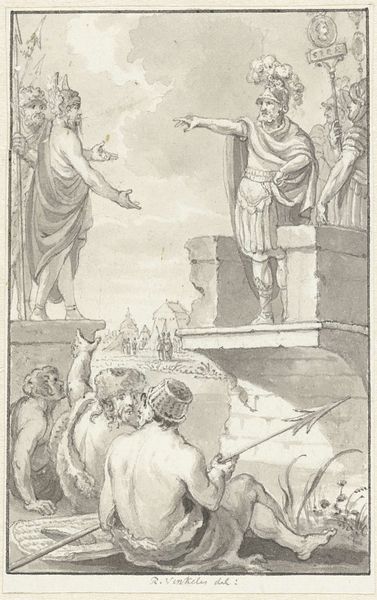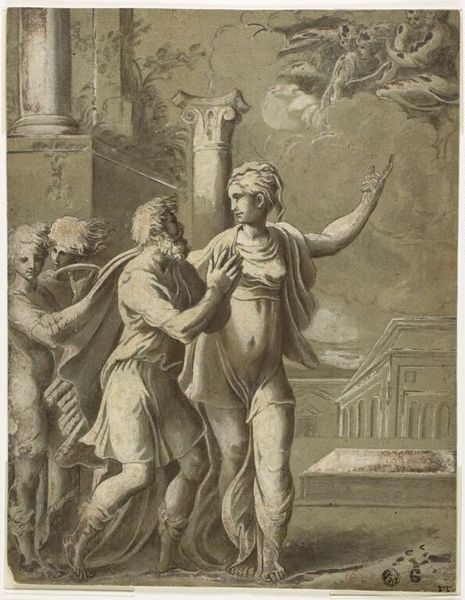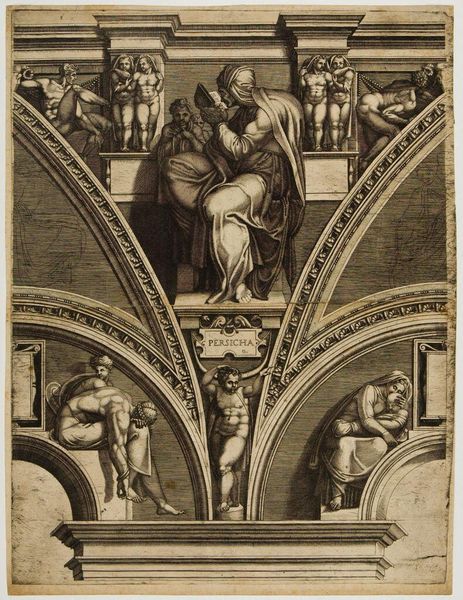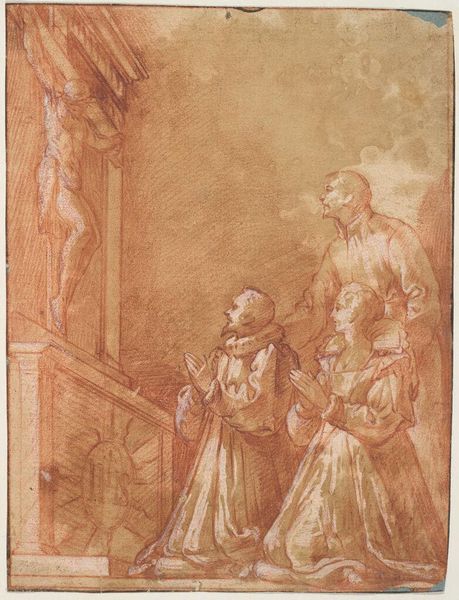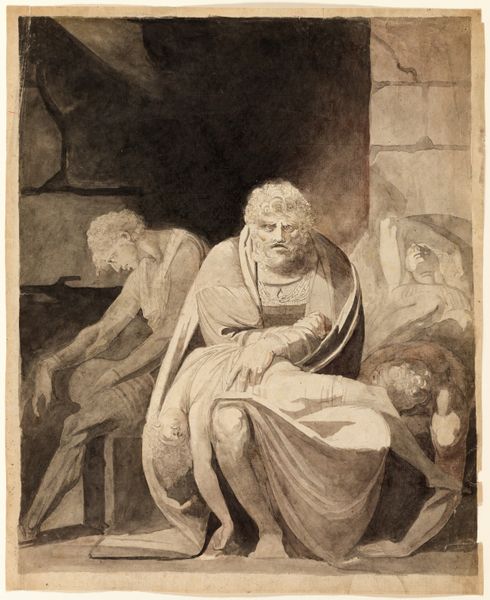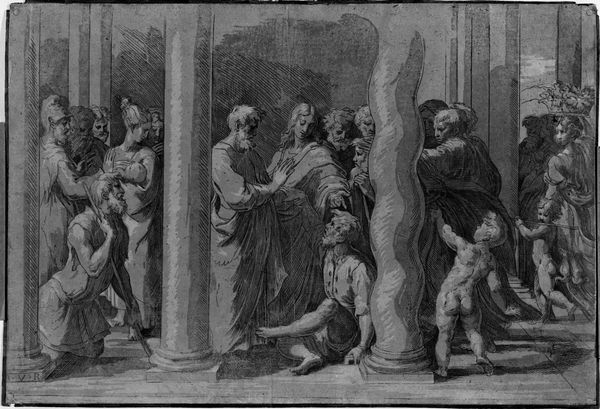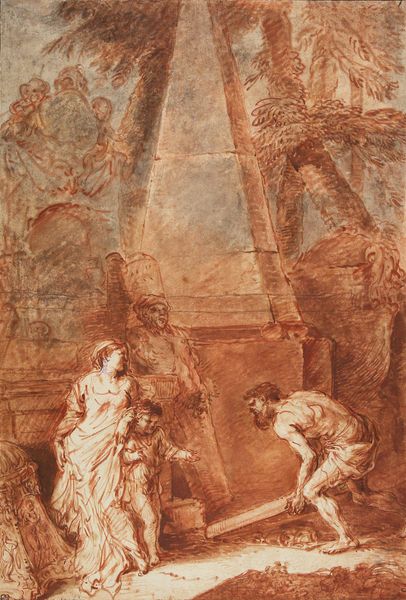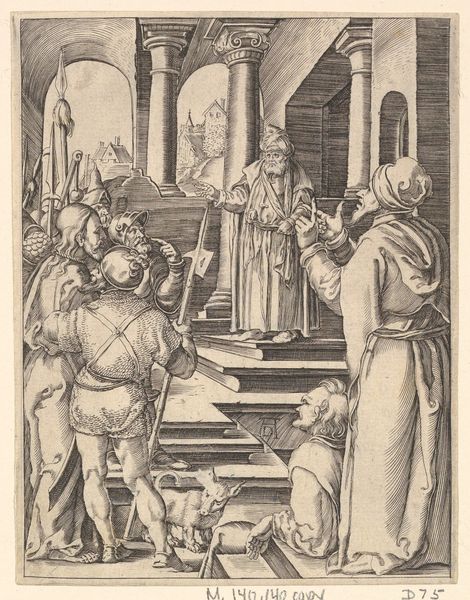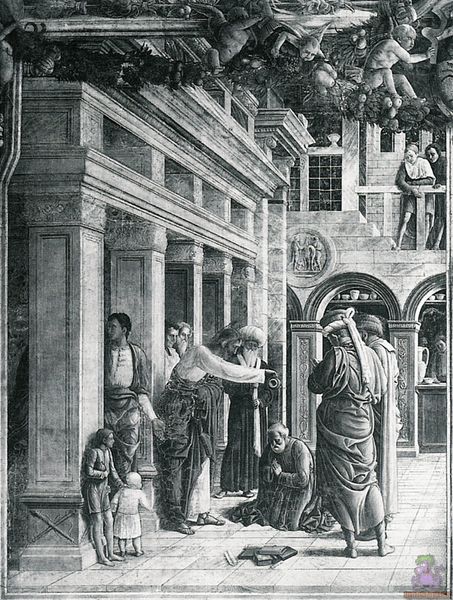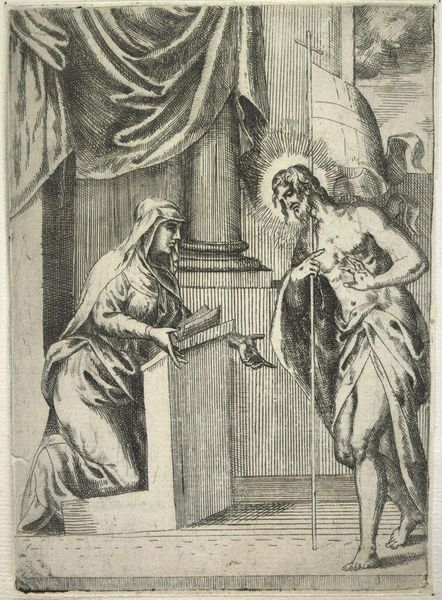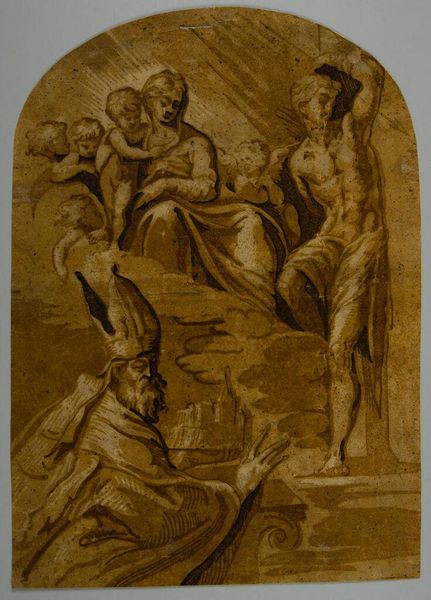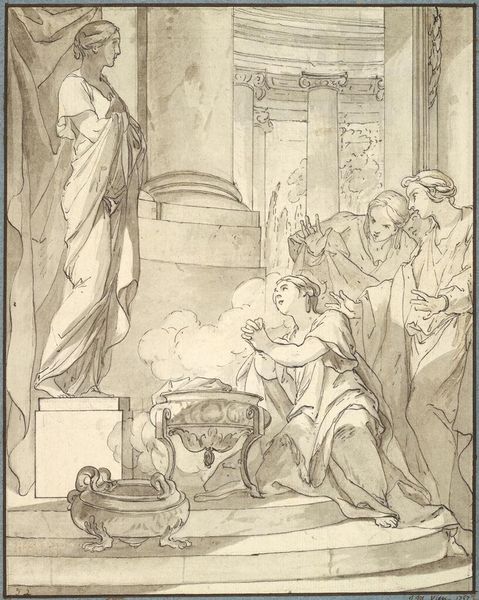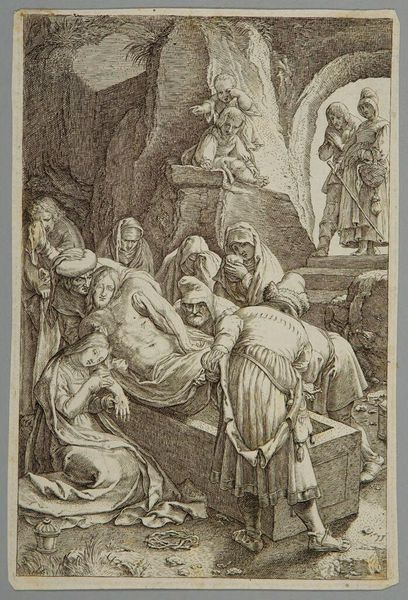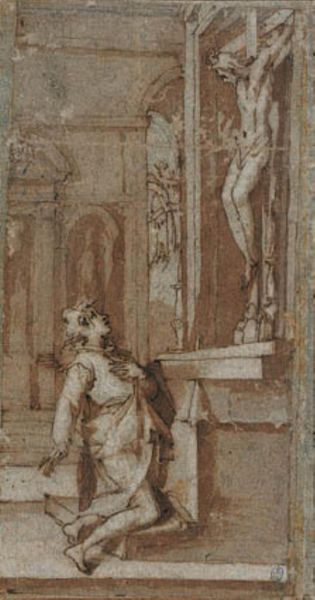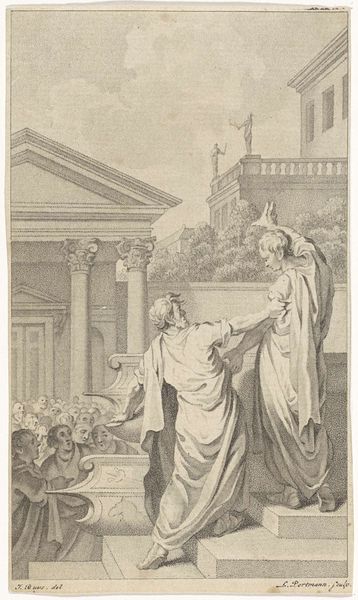
painting, fresco
#
narrative-art
#
painting
#
mannerism
#
figuration
#
fresco
#
oil painting
#
history-painting
#
italian-renaissance
Copyright: Public domain
Editor: This is Francesco Salviati's "Bathsheba Goes to David", painted around 1554. It appears to be a fresco, and I'm struck by how the architectural setting seems almost dreamlike, overshadowing the figures. What historical lens can we apply to fully appreciate this artwork? Curator: That's a perceptive observation. Think about the role of patronage in the mid-16th century. How would depicting this biblical scene – a powerful king's desire leading to exploitation – serve the artist and his patron? Salviati was working during a time when the church’s influence was being heavily contested; consider the potential for this image to operate on multiple levels. Editor: So, it’s more than just a literal depiction of the biblical story. It's also about power dynamics? How was something like this actually *seen* at the time? Was it for public or private viewing? Curator: This fresco would have been displayed in a private setting, likely commissioned by someone of considerable wealth and influence. Its placement there reveals layers of meaning. Think about it: the patron might have been sending subtle signals of power. Or, perhaps, even reflecting on the potential corruptibility inherent in wielding it. What does that suggest about the assumed virtue and moral strength of leaders during this period? Editor: It sounds like the act of displaying this painting itself made a statement, even without overtly condemning the King! I had been interpreting it only as a historical depiction, not an institutional reflection. Curator: Exactly. And notice the Mannerist style – the elongated figures, the almost theatrical composition. Those elements heighten the emotional impact and prompt deeper reflection on the narratives woven into history. How do you see this "theatrical" component affecting your interpretation? Editor: I suppose it transforms a moralizing biblical tale into a meditation on ethics of those in charge... It pushes past basic storytelling and starts questioning their ethics instead! Curator: Precisely. Considering the artwork this way underscores that even seemingly religious pieces have layers of political and social messaging, reflecting the complexities of their time.
Comments
No comments
Be the first to comment and join the conversation on the ultimate creative platform.
